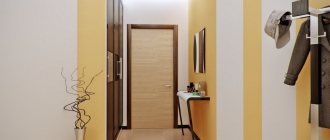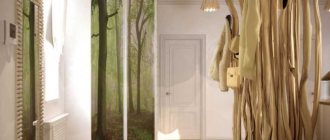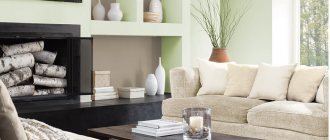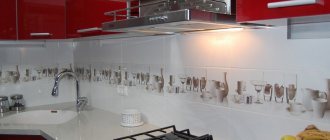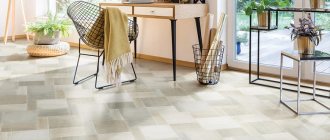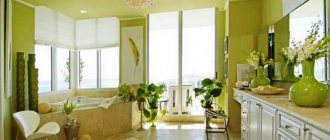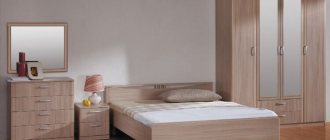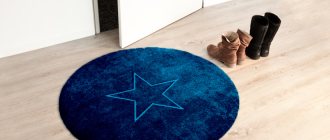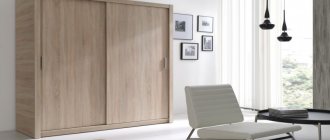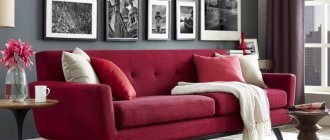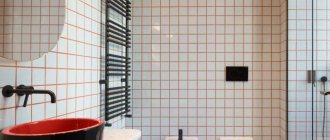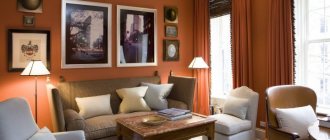23.12.2019
,
It is difficult to overestimate the role of color in the interior. It sets the style and mood and influences the overall perception of the living space. A harmonious combination of shades in the corridor is especially important. The absence of windows, a small area, and a specific layout make the color scheme the central character of the room. It’s not enough to decorate the walls and ceiling in your favorite shades. You also need to choose the color of the cabinet in the hallway, take care of combining other elements of furniture and decor in order to visually expand the space, fill it with light and pleasant contrasts.
The corridor is perceived by many as a utility room, boring and uninteresting. Meanwhile, the functionality of the hallway is much broader than just a place to store outerwear, outdoor accessories and shoes. Competent design turns the corridor into the calling card of the entire house. The standard way to create comfort and harmony in a room is to choose a good color palette for finishing surfaces, combining shades with fittings, furniture and decor. The corridor does not become an exception to the general rules of design. But there are some nuances that need to be taken into account when choosing a color:
- The size and layout of the room directly affect the main shade. For example, in a small hallway you cannot use dark colors. In a narrow and long corridor, horizontal contrasts in the form of stripes should be avoided. In a small room with high ceilings, it is better to decorate the surfaces in warm, soft shades.
- The design of the hallway should be universal in order to become a natural complement to a bright children's room, a discreet living room and a glamorous bedroom. In other words, the palette should correspond to the overall style of the house.
- The corridor is subjected to daily mechanical tests. Moisture and street dust entering the room on shoes, outerwear, and accessories make it difficult to maintain perfect cleanliness. Therefore, it is better to avoid using white, blue, pink or light green colors. On light shades of a cold palette, every speck will be visible from any angle.
When choosing a future palette for decorating a corridor, it is worth remembering that color literally works wonders. It visually enlarges the space, emphasizes the advantages and carefully disguises the shortcomings. But with the same ease, color can turn a hallway into a “well,” extend an already long corridor, or significantly reduce the height of the ceilings.
Criteria for choosing a color for the hallway
- Small hallway
Most hallways are small, this has long been no secret. And a recipe for creating a harmonious interior in such premises has long been identified. Choose cool grey, blue or silver shades.
This design will refresh the interior and visually add more. However, make a choice in favor of any pastel, smoky and muted shades. Milky, powdery, coffee, ivory. Choose any one. If the room has low ceilings, choose a monochromatic light finish that matches the main color concept.
- Long narrow hallway
For this type, light shades are used. White with warm or cool undertones is often chosen. We strongly recommend that you avoid any patterns or geometric lines. Imagine filling the space with furniture after renovation. And then all your family members will leave outerwear, umbrellas, hats, and bags in the hallway. They are all different colors and textures. If you add wallpaper designs to this ensemble, chaos will result. Opt for plain coverings. This solution will look stylish and noble.
- Wide hallway
In such a room there is an opportunity to show imagination and experiment with colors and shapes. Use dark shades in combination with light ones; contrasts are always in fashion. A calm palette in milky and coffee shades or coal black is up to you.
- Large hallway
In a large hallway, the main thing is to follow the basic rules of design. Choose a style and realize your wildest ideas. Red, orange, apricot, yellow, green - any color is at your service. If you have a window in the hallway that faces south, it is better to cool the interior with fresh and cool tones. The color of sea wave, blue, emerald, purple will perfectly complement the warm and bright interior.
Feng Shui hallway
A very fashionable trend is choosing the color of the hallway according to Feng Shui. If you follow all the canons, the colors will correspond to the cardinal directions. The beginning is set by the front door - the counting of colors begins from there.
You can choose the desired color and shade using the Bagua compass. The color palette depends on the sector in which the corridor is located.
Bagua Compass
When decorating a room, you should take into account universal recommendations. For example, in small hallways it is recommended to use light colors. But you need to act carefully so that there is no conflict between the colors that Feng Shui recommends and those that decorate the room.
Related article: Long hallway design ideas: accents and interesting solutions
Feng Shui allows you to decorate not only walls, but also furniture and interior elements. According to Feng Shui philosophy, Shimo ash is a type of wood that can fill a person with energy. Therefore, it is better to select things for the hallway from such material. The rich colors of ash will help with this. Even such small compliance with the directions of the Bagua compass counts.
It is important to take care of lighting. It should be bright. It is better to place the selected type of lighting above the entrance. This will help bring good luck into your home.
Hallways in light tones
Light colors look light and airy and fill the room with bright positive energy. It’s no secret that this design visually expands the walls and raises the ceiling. Most people find it very comfortable to be in such a room.
The light palette can be combined with any shades from the color spectrum. Any decor and unusual elements will look bright, light and stylish. The general perception of the interior is associated with calm, cleanliness and freshness. Especially if you use soft pastel colors. Soft blue, lilac, light green, milky. Such colors always look well-groomed, warm and create a magical, cozy atmosphere.
Blue and white: lightness and freshness
Supporters of the classics who do not want to experiment can choose a combination of white and blue . This simple and obvious idea, as if whispered by nature itself, provides enormous space for creativity. Marine style, Mediterranean, classic, Provence suggest themselves in this range. White adds airiness to the interior, which is often missing in rooms without windows. At the same time, such a partner will create the prerequisites for linking the interior of the corridor with the furnishings of the rooms it connects: white interior doors will become a kind of universal portal between the styles of different rooms.
Chocolate tones in the hallway
Chocolate shades look delicious and create a warm atmosphere. This tone is often used in natural wood textures, which gives the interior nobility and speaks of the high status of its owners. This color is traditional and has long been considered a classic, which always looks respectable, expensive and stylish.
Color and stylistic solutions based on blue
Undoubtedly, the color blue is noble, romantic, and strict at the same time. It seems that it is self-sufficient, but designers warn against trying to build a color combination in a blue hallway solely on these shades: too much blue will be too cold. The problem is solved quite simply: a worthy companion is selected for blue, capable of brightening up and complementing the main tone.
Gray tones in the hallway
Gray shades have a rich palette. They go well with other colors. Gray is basic, which means it will highlight other tones against its background, emphasizing their depth and other advantages. This tone creates a calm atmosphere of relaxation and harmony with oneself. In addition, this is the most practical shade of all. Ideal for the hallway, even for small spaces.
Use light shades of gray. For example, metal color, graphite, pearl. These colors will make the interior lively and dynamic, moderately strict, simple and concise. Don't be afraid of this color scheme; your interior will not be dull and faceless, as is commonly believed.
Blue with gray: the severity of silver or the dynamics of metallic
The complex and at first glance gloomy combination of achromatic gray and blue does not seem to be the most successful for a hallway. Even if silver plays the role of gray, it is difficult to call such a duet life-affirming. In this case, the blue color in the hallway interior should be diluted by at least a third. At the same time, this combination is perfect for a spacious hallway in a classic or retro style: slight melancholy and relaxation are guaranteed in such walls.
The impression will be enhanced by mother-of-pearl and numerous mirrors , visually multiplying the space. Those who are drawn to the latest in technological progress can choose another technique: metallic on a blue background. Open chrome shelves and mounts for sports equipment will fit perfectly into the interior of the hallway of a modern young couple who promote the motto “Life is movement.”
Decorative wall
There are many ways to create an elegant decorative wall in the hallway. For example, painting on wet plaster is very beautiful.
However, only an artist can create such a mesmerizing finish. A special finishing material - frescoes - can imitate such a pattern.
Synthetic and non-woven frescoes usually decorate a separate fragment, one or two walls.
Another finishing option is photo wallpaper that is affordable and easy to install. They add necessary and desired nuances to the wall design.
Decorative plaster is practical, convenient and original. Grainy and harmless - it is easy to clean and looks harmonious with any hallway decoration.
Designers advise that before decorating a corridor, it is necessary to level the entire surface of the walls, and only after that begin to decorate them.
Blue and green: a natural duo
Another pair of colors that looks natural, like a tandem dictated by nature itself, is blue and green . The overall impression will be determined by the shade of green. Designers traditionally recommend paying attention to light colors, reminiscent of fresh foliage, or olive shades, hiding the severity of blue. The landscape of the combination will involuntarily set you in a romantic mood, especially in a composition with light accessories and wicker furniture.
However, for supporters of more luxurious interiors, there are ideas in these tones: dark blue in symbiosis with pine or emerald greenery and a subtle gilding motif
- a combination worthy of palace apartments. Gold can be successfully replaced with light bronze, but in this case there should be a little more forged or cast elements of this shade, up to 5% of the wall area.
